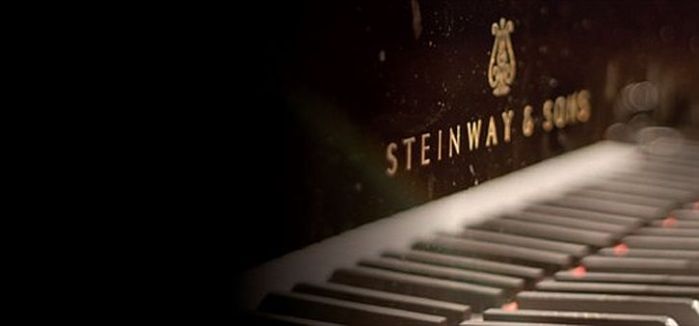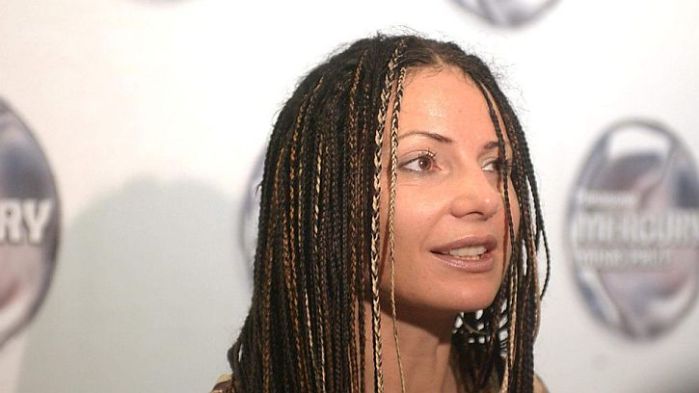The music is not in the notes,
but in the silence between.
― Wolfgang Amadeus Mozart
On the first evening of our recent long weekend in London we went along to St Martin in the Fields for A Celebration of Mozart. The St Martin events are always good value, and this programme, apart from consisting of performances of several Mozart favourites by the acclaimed string ensemble London Octave, had the added bonus of readings by the actor Donald Sumpter from Mozart’s letters and eyewitness accounts of contemporaries.
London Octave
The highly enjoyable programme opened with the Presto from Divertimento for strings in F (Salzburg Symphony No.3) and also featured Mozart’s Eine kleine Nachtmusik, the Flute Concerto in D (with soloist William Bennett), Symphony No 29 in A, and an orchestral arrangement of Ave Verum Corpus. Each piece was preceded by two or three readings by Donald Sumpter.
The excerpts from Mozart’s letters proved to be poignant, humorous and eloquent. I was staggered, first by the quality of the writing (though Mozart is also renowned for some mightily dirty, scatological screeds, Sumpter had chosen ones of a different sort); and second by their apparent length and frequency. If Mozart was typical of his social class, members of the educated elite must have spent a fair amount of time each day engaged in correspondence.
Donald Sumpter
Sumpter had selected letters and contemporary accounts that revealed how, from very young childhood, Mozart was recognized as a musical genius. From his very earliest years, his talent and precocity staggered his contemporaries. By the age of four, he was playing the harpsichord with flair. By five, he had written his first minuets. At nine, he had written his first symphony, and by twelve, he had completed his first opera.
His father, Leopold acknowledged his young son’s special gifts when he wrote that he was ‘a miracle, which God has allowed to see the light in Salzburg’. The 18th-century music historian Charles Burney confirmed this opinion by writing that the young child possessed ‘premature and almost supernatural talents’.
Mozart’s first biographer, Franz Xaver Niemetschek, recalled that, when the six-year-old Mozart played for the Empress Maria Theresa ‘people could hardly believe their ears and eyes at the performance’ and called him a ‘magician’. The Empress rewarded the Mozart family with 100 ducats and gala outfits for the two children.
By 1763, when he was 7, he and his family had left his native Salzburg for an extended three-and-a-half year concert tour of Europe. In fact, between the ages of six and seventeen, Mozart was on tour for over two-thirds of the time. In every city and at every court where Mozart performed, the prodigy played for the most important people in the musical establishment.
His father Leopold acted as Mozart’s manager, agent, promoter and teacher: he seems to have had an overbearing relationship with his son that makes you think of modern parallels, such as Murray Wilson (with Brian and other Beach Boys) or Joe Jackson (with Michael and the rest of the Jacksons). Mozart had a short and fairly tortured life, yet in those 35 years he composed some 600 pieces of music, and his musical and creative genius never flagged.
This announcement for a London concert illustrates the manner in which Leopold marketed his talented children:
Miss Mozart of eleven and Master Mozart of seven Years of Age, Prodigies of Nature; taking the opportunity of representing to the Public the greatest Prodigy that Europe or that Human Nature has to boast of. Every Body will be astonished to hear a Child of such tender Age playing the Harpsichord in such a Perfection — it surmounts all Fantastic and Imagination, and it is hard to express which is more astonishing, his Execution upon the Harpsichord playing at Sight, or his own Composition.
Mozart’s own assessment of his gifts comes in a letter to his father on 8 November 1777, when he was 21:
I cannot write Poetically; I am not a Poet. I cannot arrange my words so artfully that they reflect shadow and light; I am not a painter; I cannot even express my feelings and thoughts through gestures and Pantomimes: I am not a dancer. But I can do it with the sounds of music; I am a Musikus [musician]
For the young Mozart, playing the harpsichord and composing were equally important forms of making music. His elder sister Maria Anna wrote:
From early childhood on he liked best to play and to compose at night and in the morning. If he sat down at the clavier (or keyboard) at 9:00 PM one couldn’t take him away before midnight; I think he would have played through the whole night. In the morning between 6 o’clock and 9 o’clock he wrote, mostly while in bed; then he got up and didn’t compose throughout the entire day, except when he had to write something quickly. At 8:00 PM he always played the clavier or composed.
Most of the letters read by Donald Sumpter were from Mozart to his father; one of them was rather strange, written when his father was close to death, in April 1787. It seemed to rapidly shift from standard expressions of concern for his father’s health to expressions of Mozart’s own feelings of mortality:
As death, when we come to consider it closely, is the true goal of our existence, I have formed during the last few years such close relationships with this best and truest friend of mankind that death’s image is not only no longer terrifying to me, but is indeed very soothing and consoling, and I thank my God for graciously granting me the opportunity…of learning that death is the key which unlocks the door to our true happiness. I never lie down at night without reflecting that – young as I am – I may not live to see another day. Yet no one of all my acquaintances could say that in company I am morose or disgruntled.
Presto from Divertimento for strings in F K138, Salzburg Symphony No.3: from the programme notes
The Divertimento in F is the last of a set of three written in 1772 in Salzburg. The short last movement shows Mozart at his wittiest, most lively and most charming.
Eine Kleine Nachtmusik: from the programme notes
Although Eine Kleine Nachtmusik can claim to be Mozart’s most popular work, not much is known about the circumstances of its composition. We do not know for whom he composed it or whether Mozart intended it to be played by an orchestra or by single players. There is no record of a performance during Mozart’s lifetime. Alfred Einstein thinks Mo~ composed it for his own enjoyment.
We do know Mozart composed it in 1787 while also working on the second act of Don Giovanni (Most composers would have been kept quite busy enough only working on Don Giovanni!). We also know that in Mozart’s own thematic catalogue he indicated that he had written five movements. We now only have four, and opinions are divided as to whether it was Mozart or someone else who dropped the extra minuet and Trio.
Eine Kleine Nachtmusik is often described as a supreme example of Mozart’s mastery of balance and economy. Some experts think Mozart cut out the movement himself to preserve this balance. There is no doubt that the tunes themselves and the sound Mozart creates have a unique “rightness” which immediately appeals to the listener and ensures the piece’s perennial popularity.
Eine kleine Nachtmusik: performed by the Amsterdam Concertgebouw Kamerorkest
Flute Concerto in D: from the programme notes
Mozart loved and understood wind instruments like no other composer. However it is said that he did not like the flute. So it is no surprise that his two flute concertos were written on commission for a Dutch amateur flautist. In fact the second concerto is a simple but very effective transposition of an oboe concerto which Mozart had written before.
Mozart’s genius ensures that no one hearing this concerto could guess that the work is an arrangement, nor be convinced that Mozart did not like the flute. The music is full of natural, memorable tunes. The energetic first movement with its optimistic opening theme includes episodes that could come straight out of a comic opera. The reflective and slow movement provides a serene contrast. The final allegro is full of sparkling rhythms to close the concerto in high spirits.
Flute Concerto in D: soloist Emmanuel Pahud
Motet Ave Verum Corpus: from the programme notes
This very short motet was intended to be used in a Corpus Christi service in Baden near Vienna. It was written at the end of Mozart’s life just before the Requiem and has become one of Mozart’s best known compositions. He originally composed it for choir and orchestra. We heard an arrangement for solo violin (played by David Juritz) accompanied by strings.
Motet Ave Verum Corpus: arrangement for violin and piano
This YouTube performance is by an unnamed pair of musicians, but gives an idea of the transcription from the choral version.
Symphony No. 29: from the programme notes
Symphony No. 29 is an outstanding work of genius from Mozart’s early period. He wrote it in 1774 aged only 18 while he was Concertmaster to the court of the Archbishop of Salzburg. The mystery, simplicity and the forward movement of the opening bars astound the listener and the interest is sustained throughout the remainder of the symphony. In this work we never hear decoration for its own sake, every note leads inevitably to the next. The symphony is in the usual four movement form. The first movement is marked ‘Allegro moderato’ and so we hear more reflective music than would have been usual at the beginning of a symphony. The last movement ‘allegro con spirito’ not only has a vibrant energy but also stark drama in the remarkable development section.
Symphony No. 29: performed by Orquesta Clásica de Asturias
Bach’s Art of Fugue: London Octave with William Bennett, flute at St Martin in the Fields
See also
- Wolfgang Amadeus Mozart: genius at work: an online course in 7 lessons
- What would a modern Mozart be like?: The Guardian
- Trazom Gnagflow in his own words: review of Mozart’s Letters, edited by Robert Spaethling (Observer)
- Bach and Vivaldi Concertos at St Martin in the Fields






